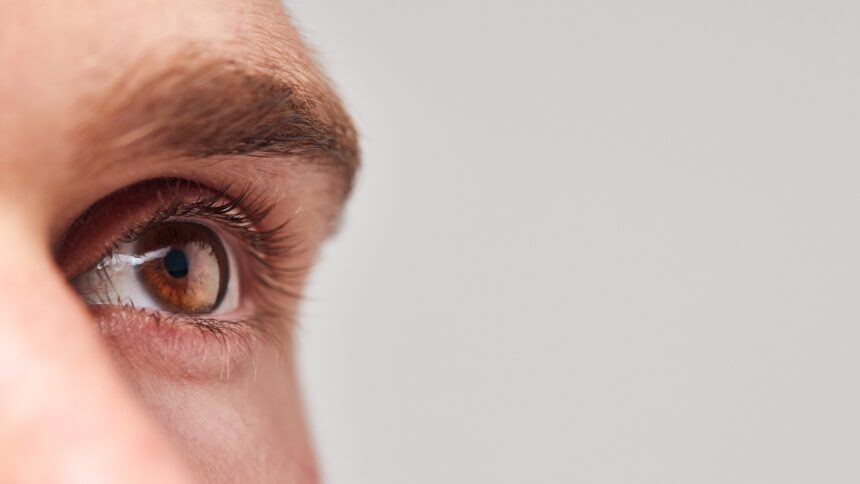“`html

Experiencing discomfort while using your monitor, often referred to as digital eye strain or computer vision syndrome, can stem from various factors. Identifying the root cause may require a few straightforward assessments of your setup. This article will explore potential issues related to monitor use, suggest basic remedies, and provide guidance on what features to consider when purchasing a new display. Please remember that this information is not a substitute for professional medical advice; consult with an eye care specialist for any concerns.
Is Your Monitor Causing Discomfort?
As remote work becomes increasingly common, many individuals are attributing their eye discomfort to prolonged screen time more than ever before. This concern is supported by research published in Nature, which indicates that engaging with electronic devices—such as computers, laptops, smartphones, and tablets—for just three hours daily can lead to symptoms associated with “computer vision syndrome.”
Common symptoms include watery eyes, blurred vision, dryness in the eyes, and general discomfort as highlighted in a cross-sectional study on this condition. Essentially, any pain or unease linked to screen usage falls under this syndrome’s umbrella. If you notice persistent discomfort while using screens or shortly after doing so, it’s advisable to discuss these symptoms with your healthcare provider.
However, it’s crucial to understand that experiencing some of these symptoms does not equate to an official diagnosis. You might be facing another unrelated issue since most people regularly engage with screens. For instance, BlueCross BlueShield identifies dry eye as the most prevalent ocular condition, which can manifest as itchy red eyes and blurred vision—symptoms also associated with computer vision syndrome. While evaluating your monitor setup is beneficial for comfort and health reasons; consulting an ophthalmologist could provide further insights.
Understanding Why Monitors Cause Eye Discomfort
Several factors may contribute to visual strain from extended periods spent staring at monitors. Below are some common issues worth considering.
Monitor Height Matters
An improperly positioned monitor can lead not only to neck pain but also exacerbate eye strain over time. Research conducted within office settings suggests that higher monitors tend to induce greater visual fatigue compared to those set lower down. Most users find it comfortable when their screens are positioned at or slightly below eye level (around -16 degrees). If you discover that your display is too high for comfort during use; take advantage of height-adjustment features available on most monitors or consider investing in a monitor arm for optimal positioning.
The Importance of Viewing Distance
The age-old warning about sitting too close to the television may seem outdated today given our proximity towards computers and mobile devices daily—but does viewing distance still hold significance?
Accordingly research indicates participants prefer viewing distances between 60 cm (approximately 24 inches) up until 100 cm (about 39 inches). Being closer than this preferred range has been shown consistently linked with increased visual fatigue levels. Adjusting either where you place your monitor on its desk space or repositioning yourself within reach could alleviate some tension.
Choosing the Right Monitor Size
Smaller screens tend toward enhanced comfort levels according Dr.Jennifer Lyerly who shared insights via her interview featured here: ‘OCuSOFT’. She cites evidence suggesting employees utilizing compact laptop displays report fewer complaints compared those working off expansive desktops due largely because wider openings reduce blinking frequency leading less lubrication across corneal surfaces!
Refresh Rate & Screen Flickering Issues
While refresh rates along flickering phenomena could potentially play roles behind certain cases—they’re typically less likely culprits overall! Humans cease perceiving individual images around fifty hertz (50Hz)—transitioning instead into seeing flowing visuals beyond this threshold whereas dogs remain capable discerning distinct frames until reaching seventy-five hertz(75Hz)—explaining why they’ve struggled watching TV historically!
Nevertheless modern-day displays usually operate above sixty hertz(60Hz)—effectively minimizing if not eliminating flicker-related fatigue stemming solely from refresh rate variations altogether! Many recommended models designed specifically combatting strains clock-in right around sixty hertz(60Hz) mark alongside additional technologies aimed reducing flicker effects even further…
“““html
Understanding Flicker-Free Technology
Flicker-free technology is designed to alleviate various visual discomforts, including eye strain. For instance, ViewSonic’s flicker-free technology employs a steady light source rather than rapidly cycling through different brightness levels.
Conclusion: Opting for monitors with higher refresh rates can enhance your viewing experience. Additionally, selecting screens that prioritize flicker reduction can further improve comfort.
The Importance of Image Resolution
While many users gravitate towards higher resolution displays for their enhanced clarity and detail, the implications of resolution on eye health are still being explored. Research findings remain somewhat ambiguous:
- A 2022 study published in the Review of Optometry indicates that higher resolution screens may help mitigate digital eye fatigue by reducing accommodative lag—the delay in focusing on closer objects after looking at something farther away.
- A 2016 research paper comparing 4K curved televisions to Full HD models suggested that 4K resolutions might not be ideal for individuals with certain uncommon eye movement patterns.
Moreover, while recent studies indicate that viewers tend to prefer 8K images over 4K ones—though whether they can fully perceive the differences remains uncertain—there is insufficient evidence to confirm any significant impact on eye fatigue from these resolutions.
Conclusion:Investing in a 4K monitor may enhance visual appeal but should not be relied upon as a solution for eye strain issues.
The Impact of Blue Light on Eye Health
Blue light often faces criticism as a primary culprit behind various forms of eye strain; however, the reality is more nuanced. Marketed as “harmful” or even “dangerous,” blue light filtering technologies have led many consumers to feel anxious about its effects. Nevertheless, research suggests that blue light may not be as detrimental as once thought. It does influence sleep patterns and inadequate sleep could contribute to visual discomfort.
Your focus should shift away from worrying about blue light; instead, develop strategies to prevent sleep disruption caused by screen exposure (regardless of color).
Screen Brightness Levels and Eye Comfort
If you experience discomfort while using your monitor, it could stem from excessive brightness levels. A key recommendation from the American Academy of Ophthalmology (AAO) is simply to lower glare and brightness settings . Monitors featuringcan effectively minimize glare-induced brightness while adjusting contrast settings can also help reduce harsh lighting conditions.
“““html
Understanding Eye Comfort Certifications and Monitor Choices
TÜV Rheinland is renowned for its various safety certifications, among which the Eye Comfort Certification stands out, particularly in the tech sector. The most recent evaluations conducted in 2023 assess factors such as flicker rates and ambient light control. While a lack of this certification does not necessarily indicate that a monitor is detrimental to your eye health, having it can provide reassurance when selecting a new display. Manufacturers often highlight this certification prominently since they invest in the testing process, making it easy to identify certified monitors.
The Advantages of Curved Monitors
Curved monitors offer an enhanced viewing experience by allowing users to see more screen area with minimal eye movement. Their design mimics the natural curvature of our eyes, facilitating easier peripheral vision access. A study from 2016 revealed that participants experienced reduced eye strain and less blurred vision while using curved displays compared to flat ones.
When exploring options for curved monitors, you may notice specifications like R ratings, which indicate the optimal distance (in millimeters) from which you should view the screen for maximum comfort. But what R rating is ideal? Another study conducted in 2016 compared flat screens with various curved models rated at 1000R, 2000R, 3000R, and 4000R. The findings indicated that the 1000R curve significantly reduced user-reported eye pain scores compared to flat screens.
Summary: Curved monitors are generally more beneficial for reducing eye strain than their flat counterparts; specifically, those with a 1000R rating have been shown to alleviate discomfort effectively.
Using a Television as Your Monitor
If you’re considering utilizing a TV as your computer monitor, you’re not alone in this choice. Generally speaking, there are no significant concerns regarding eye health when doing so; however, TVs are designed for distant viewing and tend to be larger than standard monitors. This could lead to some discomfort during use due to their size and intended purpose. For optimal comfort and reduced strain on your eyes, it’s advisable to choose a monitor specifically engineered with flicker-free technology rather than relying solely on a television—though smaller TVs should pose no serious risk.
Final Thoughts on Eye Health
Prioritizing your ocular well-being is crucial; while it may seem like your monitor contributes significantly to any discomfort you experience visually, other factors might also be at play. If issues persist despite adjustments or changes made at home—such as altering settings or investing in new equipment—it’s wise to consult an optometrist for professional advice. However, keep in mind that most instances of eye strain associated with remote work typically do not result in long-term damage if addressed properly through adjustments or suitable replacements.
The article originally appeared on Popular Science.
“`






